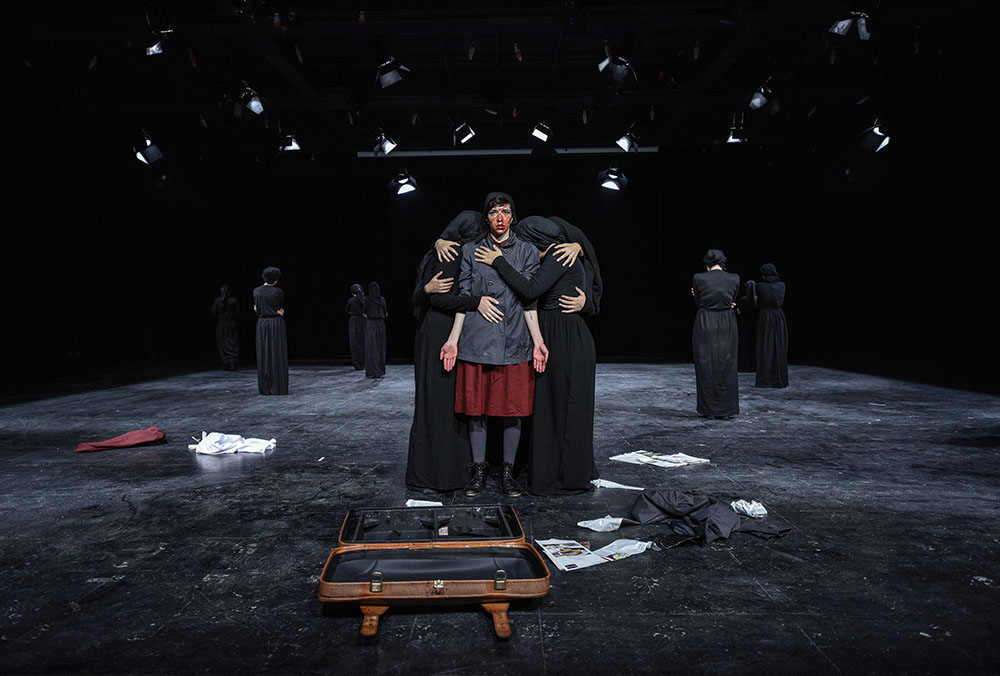New book explores how contemporary Iranian artists sidestep line of repression

LAWRENCE — In the Islamic Republic of Iran today you can be a well-paid entertainer making escapist fare. But those aren't the artists Rana Esfandiary is interested in.
In her new book, “At the Threshold: Contemporary Theatre, Art, and Music of Iran,” (Routledge), the assistant professor of theatre & dance at the University of Kansas writes about the daring stage directors, probing photographers and electronic musicians who are pushing against mullah-imposed boundaries, even as she cringes at the U.S.-based critiques of “Shahs of Sunset” and flower-haired regime-change activist Masih Alinejad.
Growing up in Iran, Esfandiary strived to avoid confrontation with the hijab-checking morality police who flourished under President Mahmoud Ahmadinejad.
She has lived in the United States since 2010 but has family who remain in Iran and visits frequently, seeing how artists toe the line of repression, sometimes falling below it into jail or persona non grata status, sometimes skating above it and getting away with technical violations of the law or at least its spirit.
In fact, one of the major figures about whom Esfandiary writes in the book, theatre director Ali Akbar Alizad, just left Iran in August to live in Great Britain.
“He was limited in his creative practice, both in academic and professional settings, after the woman-life-freedom movement,” Esfandiary said of the latest eruption of anti-government street protest in 2022.
Before his exile, Esfandiary said, Alizad rejected commercial opportunities and instead “created political works, but through the works of playwrights like Beckett and Pinter, which are so difficult for the Iranian censorship system to figure out because they are very abstract. So he can say what he wants to say without getting into trouble.”
That was true for a time, anyway.
The book covers Alizad’s 2018 production of Jean Genet’s “The Maids,” in which the director’s use of two male actors to portray the two ostensibly female servant characters not only violated a ban on cross-dressing but gave the class-conscious drama a contemporary, anti-authority undertone.
In a similar fashion, Esfandiary expounded on the growth of the electronic music movement in Iran, which circumvents the religious prohibition on female singing before mixed-gender crowds in public.
“Music is such an ambiguous topic in Iran because some works just get shut down and no one knows why, and some works get published and no one knows why,” Esfandiary said. “There is no set of well-defined rules.”
Esfandiary wrote that revolutionary leader Ayatollah Ruhollah Khomeini reacted against the westernizing influence of his predecessor, Shah Mohammad Reza Pahlavi, by banning certain forms of music.
“Khomeini was so against western music because he believed that the music would cause young people to be distracted from God,” Esfandiary said. “Little by little, the space opened up, but women still cannot sing in public in Iran.
“Well, electronic musicians in Iran produce music that has no lyrics, so that part is solved. Now we see women without hijab onstage performing these electronic pieces. We see women DJs and VJs on stage performing. They are kind of playing by the rules, but, at the same time, they're amending the rules.”
In a time of repression, Esfandiary wrote, the very act of gathering in “jubilance has become a subversive tool to counter the state.”
Esfandiary devoted a chapter to cultural productions by and about expatriate Iranians in the West, such as the “reality TV” show “Shahs of Sunset,” in which the wealthy, self-absorbed stars adopt a “Persian” identity and shun an Iranian one.
Along with Alinejad and “Women of Allah” photographer Shirin Neshat, Esfandiary consigns the Shahs to “the category of a native informant echoing the hostile policies instigated by Washington hawks.”
The artists she admires and tries to highlight in her book, Esfandiary said, are those who still take risks but protest indirectly, from within the system “by finding loopholes.”
“There's always this conception about Iranian artists who go against what the government wants, as if they're revolutionary or they must sacrifice everything,” she said. “There are artists ... doing their thing, but nobody talks about them because they are not as hot a topic as some of the most censored artists in Iran or abroad. And I just wanted to give some stage time for them to be heard and seen. They have found a way to protect their dignity, but, at the same time, criticize the government.”
Image: "Mountain Language" (Molavi Theatre, 2016, Tehran, Iran) Copyright: Ali Alizad. Photo by Hamed Daei.